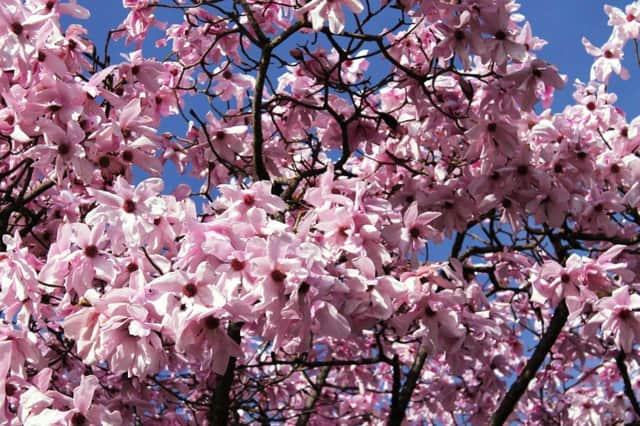Pretty in pink


So it is with Magnolia sargentiana var robusta which in some years produces so many flowers that it’s virtually impossible to count them. But all that effort means that the following year the tree may throw out only a handful of blooms while it recovers from its exertions.
The year after... well, it’s back feeling on top of the world and it again does its best to show the world just how majestic it really is.
Advertisement
Hide AdAdvertisement
Hide AdMagnolia sargentiana was discovered in 1903 by Ernest “Chinese” Wilson, not surprisingly in China. According to Wilson, this was the largest of the Chinese magnolias. In 1908, he also collected seeds of the variety robusta whose flowers are larger and more showy than the standard species.
In the century and a bit since then, robusta has made its mark on gardens and gardeners throughout the world, no more so than in Britain where its magnificent flowers appear in spring before its leaves have unfolded.
Although it hails from the Far East and not the south-eastern United States – where the majority of magnolias have their home – it is one of several of its family to bloom in March and April.
It joins the like of M soulangiana whose great waxy blooms range in colour from pure white (Alba superba) to rosy red (rubra).
Advertisement
Hide AdAdvertisement
Hide AdBoth M soulangiana and M sargentiana rubra may start off small, but given the right conditions, they will spread upwards and outwards until they are no longer guaranteed to be flavour of the month in an average-sized garden. Expect a mature specimen of sargentiana rubra to spread its branches and eventually reach a height of 40ft.
Anyone thinking of planting such a tree should take that into account and prepare its home with care. Magnolias prefer a well-drained, good garden loam rich in organic matter, compost or leafmould, much like their forest home, and they seem to do better when planted while dormant.
And anyone who wants a magnolia but hasn’t the space for a potential giant should consider instead M stellata, which bears fragrant star-shaped flowers in April and which has the decency to grow to perhaps only six foot in height and not much more in width.